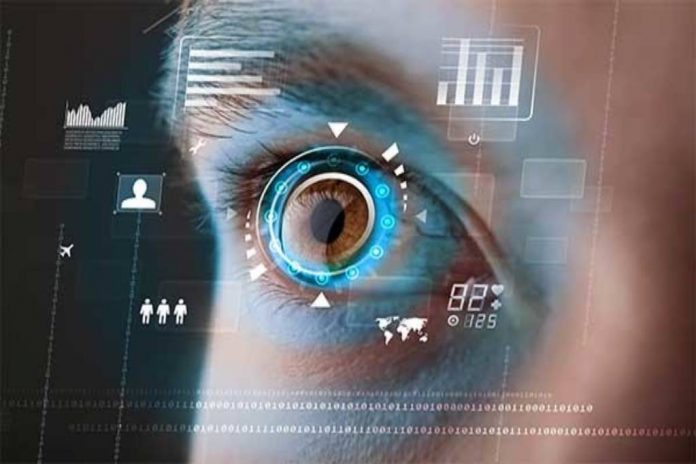As AI grows more sophisticated and widespread, the voices warning against the potential dangers of artificial intelligence grow louder.
“These things could get more intelligent than us and could decide to take over, and we need to worry now about how we prevent that happening,” said Geoffrey Hinton, known as the “Godfather of AI” for his foundational work on machine learning and neural network algorithms. In 2023, Hinton left his position at Google so that he could “talk about the dangers of AI,” noting a part of him even regrets his life’s work.
The renowned computer scientist isn’t alone in his concerns.
Tesla and SpaceX founder Elon Musk, along with over 1,000 other tech leaders, urged in a 2023 open letter to put a pause on large AI experiments, citing that the technology can “pose profound risks to society and humanity.”
Whether it’s the increasing automation of certain jobs, gender and racially biased algorithms or autonomous weapons that operate without human oversight (to name just a few), unease abounds on a number of fronts. And we’re still in the very early stages of what AI is really capable of.
Dangers of AI
IS AI DANGEROUS?
The tech community has long debated the threats posed by artificial intelligence. Automation of jobs, the spread of fake news and a dangerous arms race of AI-powered weaponry have been mentioned as some of the biggest dangers posed by AI.
LACK OF AI TRANSPARENCY AND EXPLAINABILITY
AI and deep learning models can be difficult to understand, even for those that work directly with the technology. This leads to a lack of transparency for how and why AI comes to its conclusions, creating a lack of explanation for what data AI algorithms use, or why they may make biased or unsafe decisions. These concerns have given rise to the use of explainable AI, but there’s still a long way before transparent AI systems become common practice.
JOB LOSSES DUE TO AI AUTOMATION
AI-powered job automation is a pressing concern as the technology is adopted in industries like marketing, manufacturing and healthcare. By 2030, tasks that account for up to 30 percent of hours currently being worked in the U.S. economy could be automated — with Black and Hispanic employees left especially vulnerable to the change — according to McKinsey. Goldman Sachs even states 300 million full-time jobs could be lost to AI automation.
“The reason we have a low unemployment rate, which doesn’t actually capture people that aren’t looking for work, is largely that lower-wage service sector jobs have been pretty robustly created by this economy,” futurist Martin Ford told Built In. With AI on the rise, though, “I don’t think that’s going to continue.”
As AI robots become smarter and more dexterous, the same tasks will require fewer humans. And while AI is estimated to create 97 million new jobs by 2025, many employees won’t have the skills needed for these technical roles and could get left behind if companies don’t upskill their workforces.
“If you’re flipping burgers at McDonald’s and more automation comes in, is one of these new jobs going to be a good match for you?” Ford said. “Or is it likely that the new job requires lots of education or training or maybe even intrinsic talents — really strong interpersonal skills or creativity — that you might not have? Because those are the things that, at least so far, computers are not very good at.”
Even professions that require graduate degrees and additional post-college training aren’t immune to AI displacement.
As technology strategist Chris Messina has pointed out, fields like law and accounting are primed for an AI takeover. In fact, Messina said, some of them may well be decimated. AI already is having a significant impact on medicine. Law and accounting are next, Messina said, the former being poised for “a massive shakeup.”
“Think about the complexity of contracts, and really diving in and understanding what it takes to create a perfect deal structure,” he said in regards to the legal field. “It’s a lot of attorneys reading through a lot of information — hundreds or thousands of pages of data and documents. It’s really easy to miss things. So AI that has the ability to comb through and comprehensively deliver the best possible contract for the outcome you’re trying to achieve is probably going to replace a lot of corporate attorneys.”
SOCIAL MANIPULATION THROUGH AI ALGORITHMS
Social manipulation also stands as a danger of artificial intelligence. This fear has become a reality as politicians rely on platforms to promote their viewpoints, with one example being Ferdinand Marcos, Jr., wielding a troll army to capture the votes of younger Filipinos during the Philippines’ 2022 election.
, which is just one example of a social media platform that relies on AI algorithms, fills a user’s feed with content related to previous media they’ve viewed on the platform. Criticism of the app targets this process and the algorithm’s failure to filter out harmful and inaccurate content, raising concerns over ability to protect its users from misleading information.
Online media and news have become even murkier in light of AI-generated images and videos, AI voice changers as well as deep fakes infiltrating political and social spheres. These technologies make it easy to create realistic photos, videos, audio clips or replace the image of one figure with another in an existing picture or video. As a result, bad actors have another avenue for sharing misinformation and war propaganda, creating a nightmare scenario where it can be nearly impossible to distinguish between creditable and faulty news.
“No one knows what’s real and what’s not,” Ford said. “So it really leads to a situation where you literally cannot believe your own eyes and ears; you can’t rely on what, historically, we’ve considered to be the best possible evidence… That’s going to be a huge issue.”
SOCIAL SURVEILLANCE WITH AI TECHNOLOGY
In addition to its more existential threat, Ford is focused on the way AI will adversely affect privacy and security. A prime example is China’s use of facial recognition technology in offices, schools and other venues. Besides tracking a person’s movements, the Chinese government may be able to gather enough data to monitor a person’s activities, relationships and political views.
Another example is U.S. police departments embracing predictive policing algorithms to anticipate where crimes will occur. The problem is that these algorithms are influenced by arrest rates, which disproportionately impact Black communities. Police departments then double down on these communities, leading to over-policing and questions over whether self-proclaimed democracies can resist turning AI into an authoritarian weapon.
“Authoritarian regimes use or are going to use it,” Ford said. “The question is, How much does it invade Western countries, democracies, and what constraints do we put on it?”
LACK OF DATA PRIVACY USING AI TOOLS
If you’ve played around with an AI chatbot or tried out an AI face filter online, your data is being collected — but where is it going and how is it being used? AI systems often collect personal data to customize user experiences or to help train the AI models you’re using (especially if the AI tool is free). Data may not even be considered secure from other users when given to an AI system, as one bug incident that occurred with in 2023 “allowed some users to see titles from another active user’s chat history.” While there are laws present to protect personal information in some cases in the United States, there is no explicit federal law that protects citizens from data privacy harm experienced by AI.
BIASES DUE TO AI
Various forms of AI bias are detrimental too. Speaking to the New York Times, Princeton computer science professor Olga said AI bias goes well beyond gender and race. In addition to data and algorithmic bias (the latter of which can “amplify” the former), AI is developed by humans — and humans are inherently biased.
“A.I. researchers are primarily people who are male, who come from certain racial demographics, who grew up in high socioeconomic areas, primarily people without disabilities,” said. “We’re a fairly homogeneous population, so it’s a challenge to think broadly about world issues.”
The limited experiences of AI creators may explain why speech-recognition AI often fails to understand certain dialects and accents, or why companies fail to consider the consequences of a chatbot impersonating notorious figures in human history. Developers and businesses should exercise greater care to avoid recreating powerful biases and prejudices that put minority populations at risk.
SOCIOECONOMIC INEQUALITY AS A RESULT OF AI
If companies refuse to acknowledge the inherent biases baked into AI algorithms, they may compromise their DEI initiatives through AI-powered recruiting. The idea that AI can measure the traits of a candidate through facial and voice analyses is still tainted by racial biases, reproducing the same discriminatory hiring practices businesses claim to be eliminating.
Widening socioeconomic inequality sparked by AI-driven job loss is another cause for concern, revealing the class biases of how AI is applied. Workers who perform more manual, repetitive tasks have experienced wage declines as high as 70 percent because of automation, with office and desk workers remaining largely untouched in AI’s early stages. However, the increase in generative AI use is already affecting office jobs, making for a wide range of roles that may be more vulnerable to wage or job loss than others.
Sweeping claims that AI has somehow overcome social boundaries or created more jobs fail to paint a complete picture of its effects. It’s crucial to account for differences based on race, class and other categories. Otherwise, discerning how AI and automation benefit certain individuals and groups at the expense of others becomes more difficult.
WEAKENING ETHICS AND GOODWILL BECAUSE OF AI
Along with technologists, journalists and political figures, even religious leaders are sounding the alarm on AI’s potential pitfalls. In a 2023 Vatican meeting and in his message for the 2024 World Day of Peace, Pope Francis called for nations to create and adopt a binding international treaty that regulates the development and use of AI.
Pope Francis warned against AI’s ability to be misused, and “create statements that at first glance appear plausible but are unfounded or betray biases.” He stressed how this could bolster campaigns of disinformation, distrust in communications media, interference in elections and more — ultimately increasing the risk of “fueling conflicts and hindering peace.”
The rapid rise of generative AI tools gives these concerns more substance. Many users have applied the technology to get out of writing assignments, threatening academic integrity and creativity. Plus, biased AI could be used to determine whether an individual is suitable for a job, mortgage, social assistance or political asylum, producing possible injustices and discrimination, noted Pope Francis.
“The unique human capacity for moral judgment and ethical decision-making is more than a complex collection of algorithms,” he said. “And that capacity cannot be reduced to programming a machine.”
AUTONOMOUS WEAPONS POWERED BY AI
As is too often the case, technological advancements have been harnessed for the purpose of warfare. When it comes to AI, some are keen to do something about it before it’s too late: In a 2016 open letter, over 30,000 individuals, including AI and robotics researchers, pushed back against the investment in AI-fueled autonomous weapons.
“The key question for humanity today is whether to start a global AI arms race or to prevent it from starting,” they wrote. “If any major military power pushes ahead with AI weapon development, a global arms race is virtually inevitable, and the endpoint of this technological trajectory is obvious: autonomous weapons will become the Kalashnikovs of tomorrow.”
This prediction has come to fruition in the form of Lethal Autonomous Weapon Systems, which locate and destroy targets on their own while abiding by few regulations. Because of the proliferation of potent and complex weapons, some of the world’s most powerful nations have given in to anxieties and contributed to a tech cold war.
Many of these new weapons pose major risks to civilians on the ground, but the danger becomes amplified when autonomous weapons fall into the wrong hands. Hackers have mastered various types of cyber attacks, so it’s not hard to imagine a malicious actor infiltrating autonomous weapons and instigating absolute .
If political rivalries and warmongering tendencies are not kept in check, artificial intelligence could end up being applied with the worst intentions. Some fear that, no matter how many powerful figures point out the dangers of artificial intelligence, we’re going to keep pushing the envelope with it if there’s money to be made.
“The mentality is, ‘If we can do it, we should try it; let’s see what happens,” Messina said. “‘And if we can make money off it, we’ll do a whole bunch of it.’ But that’s not unique to technology. That’s been happening forever.’”
FINANCIAL CRISES BROUGHT ABOUT BY AI ALGORITHMS
The financial industry has become more receptive to AI technology’s involvement in everyday finance and trading processes. As a result, algorithmic trading could be responsible for our next major financial crisis in the markets.
While AI algorithms aren’t clouded by human judgment or emotions, they also don’t take into account contexts, the interconnectedness of markets and factors like human trust and fear. These algorithms then make thousands of trades at a blistering pace with the goal of selling a few seconds later for small profits. Selling off thousands of trades could scare investors into doing the same thing, leading to sudden crashes and extreme market volatility.
Instances like the 2010 Flash Crash and the Knight Capital Flash Crash serve as reminders of what could happen when trade-happy algorithms go berserk, regardless of whether rapid and massive trading is intentional.
This isn’t to say that AI has nothing to offer to the finance world. In fact, AI algorithms can help investors make smarter and more informed decisions on the market. But finance organizations need to make sure they understand their AI algorithms and how those algorithms make decisions. Companies should consider whether AI raises or lowers their confidence before introducing the technology to avoid stoking fears among investors and creating financial chaos.





























